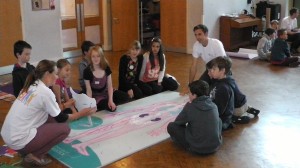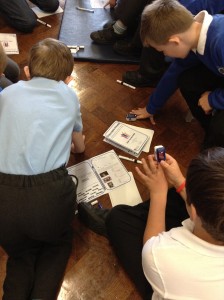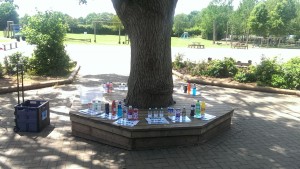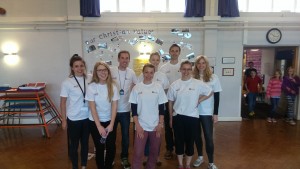This summary was prepared by the authors of the ‘Changing Horizons’ report: Val Williams, Victoria Mason and Paul Swift, together with Charlotte Hicks from Guideposts Trust.
It is estimated that between 20-30% of offenders who enter the criminal justice system have a ‘learning disability’. In 2005, a Benjamin Meaker fellow, Professor Susan Hayes, visited Norah Fry Research Centre, and her research in a large UK prison (Hayes et al., 2007) lent weight to the concerns about people with learning disabilities in prison. Since then, there has been other important research to start to examine the needs of this group of offenders (Loucks, 2007), but very little in-depth work to understand the experiences of the criminal justice system (CJS) from the point of view of people with learning disabilities themselves.
Staff at Norah Fry Research Centre were therefore very pleased to be able to carry out a piece of research for Guideposts Trust in 2013-14, in order to inform their training project for this group of people. The study worked in two ways. Firstly a small group of people who had past experience of offending formed an advisory panel for the project. They helped the research team to focus on particular themes that had been important to them, and told us for instance about the way in which people can get pulled into crime by a wish to identify with a peer group, or with ‘friends’. The main motivation for crime seemed often to be a basic isolation and loneliness in people’s lives. Secondly, the research team carried out interviews with ten individuals across the South-West, all of whom had some experience of police custody, being arrested or cautioned, or going to court. We wanted to hear these people’s stories, on their own terms, and their interviews were re-drafted into narratives, which they then read through and checked.
The first striking finding in this small study was that ‘offenders with learning disabilities’ can and do want to take positive action, to support others, identify solutions for themselves, and help research to improve the system. Several of the people we met were involved in peer support organisations, taking part as active citizens and making many useful suggestions for training the police force and others involved in the CJS. Although people often mistrusted the police, many had good experiences of individual officers and of other professionals. These were people who became known to them as individuals, and whom they grew to trust.
Problems with close relationships were often at the root of the criminal behaviour in which people engaged, and some of this was associated with the experience of being a victim (e.g. of hate crime or harassment). In some senses, these people’s identity morphed between victimhood and criminality, and one could see that these were two sides of the same coin. Some of the problems they faced in the CJS were related to not being recognised as ‘disabled’; identification at an early stage was clearly important, although for some, this was problematic – since they did not necessarily see themselves as disabled. However, the provision of accessible information and clear communication would arguably be of benefit to all prisoners. Our previous research (Swift et al., 2013) confirmed the difficulties of access to legal advice for all people with learning disabilities, and complex information was certainly one of the issues that emerged from the negative, confused experiences of several of our participants.
The recommendations we made from the present study focused largely on early identification, and in fact prevention, of criminal activity amongst this group. Those with poor socio-economic circumstances and lacking the social capital of family or close friends were particularly at risk. They should be offered the protection of the 2005 Mental Capacity Act, and the protection afforded by safeguarding procedures, together with more information and training to help them avoid the dangers of offending behaviour. At the other end of the system, however, those who have been in the CJS need sensitive support to rebuild their lives. In particular, this research highlighted the potential of self-advocacy groups to be sources of support to people who have been in trouble with the law.
We are grateful to the Guideposts Trust for supporting this research study, but would particularly like to thank the participants with learning disabilities who took part in the research. We hope that they will have a chance to continue rebuilding their own lives and support the lives of others.
References
Hayes, S., Shackell, P., Mottram, P., and Lancaster, R. (2007). The prevalence of intellectual disability in a major UK prison. British Journal of Learning Disabilities. 35, pp.162-167
Loucks, N. (2007) NO ONE KNOWS. Offenders with learning difficulties and learning disabilities. The prevalence and associated needs of offenders with learning difficulties and learning disabilities. London: The Prison Reform Trust.
Swift, P., Johnson, K., Mason, V., Shiyyab, N., and Porter, S. (2013) What happens when people with learning disabilities need advice about the law? Bristol: Norah Fry Research Centre.







